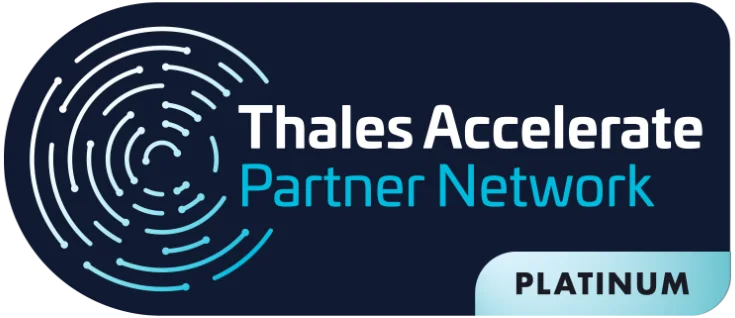While cyber attacks and threats are an ongoing struggle, they can be avoided by being aware of security policies, the various types of protocols, exploits, tools and resources used by malicious people.
In addition, knowing where and how to expect attacks ensures that you are putting preventative measures in place to protect your systems.
Cyber attacks, threats and vandalism are a dangerous and growing problem for businesses. Almost every modern business requires a network of computers, servers, printers, switches, access points and routers to operate.
The primary objective of any IT security policy is to comply with all current legislation and other security requirements in order to protect the integrity of its members and the corporate data that resides in the company’s technology infrastructure.
But this challenge is still for the few. This is shown by the study carried out by the Ponto BR Information and Coordination Center (NIC.br), where 41% of Brazilian companies have security policies against cyber attacks that are well established.
Implementing these policies is considered a best practice when developing and maintaining a cybersecurity program. As more companies develop digital programs, effective security policies are needed to effectively combat cyber attacks.
What is a security policy and why is it important in combating cyber attacks?
Basically, a security policy is a set of standardized practices and procedures designed to protect a company’s network from threats.
Typically, the first part of the cybersecurity policy focuses on the overall security expectations, roles and responsibilities in the organization. The second part may include sections for various areas of cybersecurity, such as guidelines for antivirus software or the use of cloud applications.
By default, the CISO leads the development and updates of a security policy. However, CISOs must also work with executives from other departments to create updated policies collaboratively.
Teams should start with a cybersecurity risk assessment to identify the organization’s vulnerabilities and areas of concern that are susceptible against cyberattacks and data breaches.
It is important to understand the organization’s tolerance for various security risks, highlighting concerns classified as low risk and those that threaten the survival of the organization. Staff should then consider the regulatory requirements they must meet to maintain compliance.
CISOs can then determine what level of security should be implemented for the identified security gaps and areas of concern. Remember that CISOs must match the level of protection required with the organization’s risk tolerance.
By doing so, the organization ensures that the areas with the lowest risk tolerance get the highest level of security.
What are the information security issues that cyber security policies should address against cyber attacks?
If your organization does not have an information security policy for any area of concern, security in that area is probably at risk: disorganized, fragmented and ineffective.
The issues that security policies must address differ between organizations, but some of the most important include:
Physical security
How is security handled in data centers, server rooms and terminals in company offices and elsewhere?
Physical security policies serve a wide range of purposes, including access management, monitoring and identification of secure areas.
Data retention
What data does the company collect and process? Where, how and for how long should it be stored?
Data retention policies affect several areas, including security, privacy and compliance.
Data encryption
How does the organization handle secure storage and transmission of data?
In addition to encryption objectives, data encryption policies may also discuss objectives and rules around key management and authentication.
Access control
Who can access sensitive data and what systems should be in place to ensure that sensitive data is identified and protected from unauthorized access?
Safety training
Safety depends as much on people as on technology and systems.
Human error contributes to many security breaches that could have been prevented if employees and executives received sufficient training.
Risk management
Information security risk management policies focus on risk assessment methodologies, the organization’s tolerance for risks across various systems, and who is responsible for threat management.
Business continuity
How will your organization react during a security incident that threatens critical business processes and assets?
Security and business continuity interact in many ways: security threats can quickly become business continuity risks, the processes and infrastructure that companies use to maintain the course of business must be designed with protection in mind.
We have covered just a few key points of security policies relevant to companies in many different sectors.
But every organization differs, and the content of policies must be tailored to the unique circumstances of your business, and must evolve as circumstances change.
Commitment to key protection and compliance requirements
Eval and THALES can help you develop your company’s security policies, meeting key protection and compliance requirements.
Companies should prioritize data risks by creating a classification policy based on data sensitivity.
Policies should be developed and implemented that determine what types of information are confidential and what methods, such as encryption, should be used to protect that information.
In addition, companies should monitor the transmission of information to ensure that policies are complied with and effective.
Fortunately, new technology solutions can help companies gain full visibility of their sensitive data and strengthen their compliance with protection requirements, such as the General Data Protection Law (GDPR).
The CipherTrust data security platform enables organizations to discover their sensitive information, assess the risk associated with that data, and then define and enforce security policies.
As well as making it easier to comply with data protection law at any time, your business can save money while gaining the trust of your customers and partners.
Your business achieving compliance with help from Eval
A strong information security policy is the glue that binds all security controls and compliance requirements together and is the document that describes the protection and privacy strategy across the organization.
At the same time, it can be a great accountability tool when it comes to consumer trust. To be effective, a security policy must be accepted by the entire company to effectively manage and update the security controls needed in a world of ever-changing cyber risk.
If managed well and followed accordingly, policy management is the foundation for achieving compliance with the GDPR or any other future privacy regulation.
By applying frameworks like LGPD, greater control is given back to people/consumers. This extra control goes a long way to increasing the level of trust people feel towards companies. And in turn, it can increase revenues and profits.
The LGPD requirements are much more than a checklist and if your organization processes the personal data of data subjects here in Brazil, you should take the time to explore the security controls you have in place to support the requirements of the privacy law and ensure that personal information is protected and processed appropriately.
Organizations should be transparent with their customers about their legal bases for data collection and should offer them control over whether or not they want to share their data with others.
Then, organizations must follow through and ensure that they only use the data they collect for the purposes initially described, always within the limits of the consent provided by their customers, and make sure they respect all their rights granted to them under the new legislation.
To learn more about the CipherTrust Data Security Platform, contact Eval’s experts now.
About Eval
With a track record of leadership and innovation dating back to 2004, Eval not only keeps up with technological trends, but we are also in an incessant quest to bring news by offering solutions and services that make a difference to people’s lives.
With market recognized value, Eval’s solutions and services meet the highest regulatory standards for public and private organizations, such as SBIS, ITI, PCI DSS, and LGPD. In practice, we promote information security and compliance, increase companies’ operational efficiency, and reduce costs.
Innovate now, lead always: get to know Eval’s solutions and services and take your company to the next level.
Eval, safety is value.








